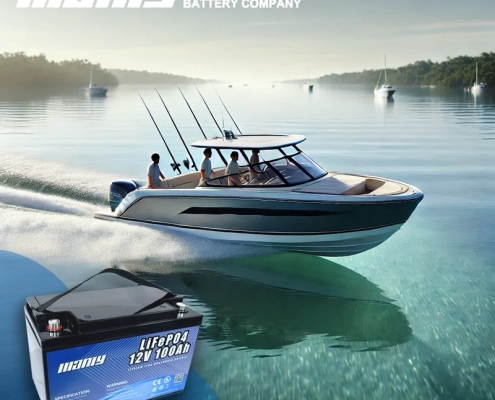Can I Charge a Lithium Battery with a Normal Charger
Table of Contents
- Can I Charge a Lithium Battery with a Normal Charger
Charging a lithium battery with a normal charger is not recommended unless specific conditions are met. While it is possible in some cases, most regular chargers are not designed to meet the precise voltage and current requirements of lithium batteries. This section explains how lithium batteries respond to different types of chargers and why using a dedicated lithium battery charger is generally the best option for maintaining battery health and performance.
Choosing the Right Lithium Battery Charger: Understanding Charging Differences Between Lithium and SLA Batteries
Understanding how lithium batteries and SLA batteries absorb charge is essential when choosing the right type of lithium battery charger. The charging profiles for these batteries differ significantly. SLA batteries typically follow a three-stage process: constant current, constant voltage (also called the absorption stage), and float charging. In contrast, lithium battery chargers operate with only two stages: constant current and constant voltage.
SLA Battery Charging Process
For an SLA battery, the first stage is the constant current phase, where the battery receives most of its charge. For example, a 12V 20Ah SLA battery may take around 3-4 hours to reach 80% of its total charge capacity. Once this level is reached, the process shifts to the constant voltage or absorption stage. This stage completes the final 20% of the charge but can take as long as the first stage, making up about 50% of the total charging time. The final stage, float charging, keeps the battery at full charge to prevent self-discharge. While this helps maintain the battery’s lifespan, it also extends the total charging time.
Why Lithium Battery Charge Faster
Charging a lithium battery is much simpler and quicker. With a lithium battery charger, the first stage (constant current) brings the battery up to 99% of its charge. The remaining 1% is topped off in the second stage, constant voltage, which is much shorter than the absorption stage used for SLA batteries. This streamlined process means lithium batteries can be fully charged up to three times faster than similar-capacity SLA batteries.
For example, a 12.8V 20Ah lithium battery can reach almost full capacity in about 2.5 hours, compared to over 6.5 hours for an equivalent SLA battery. This rapid charging capability makes lithium battery chargers a popular choice for applications like golf carts, marine systems, and backup power solutions, where minimizing downtime is essential.
Voltage Profiles Matter
One key difference between SLA and lithium batteries is their voltage profiles. A fully charged 12V SLA battery typically reaches around 12.7V, while a lithium battery can reach up to 13.4V when fully charged. This narrow voltage range in lithium batteries means that using a standard SLA charger can lead to either overcharging or undercharging. To prevent these issues, you need a universal lithium battery charger that is specifically designed to meet the precise voltage requirements of lithium batteries.
The best way to charge lithium batteries is to use a dedicated li ion battery charger that follows a CC/CV (Constant Current/Constant Voltage) charging algorithm. This ensures the battery is charged safely and efficiently. Unlike SLA chargers, which may continue to trickle charge, a lithium battery charger stops charging as soon as the battery reaches full capacity, preventing potential damage from overcharging.
How Lithium Batteries Respond to an SLA Charging Profile
One common question many people have is whether a lithium battery can be safely charged using an SLA (Sealed Lead Acid) charger. The short answer is: Yes, but there are conditions. To understand why, it’s crucial to look at how lithium batteries absorb charge compared to SLA batteries, especially when using a charger designed for a different type of battery.
How Lithium Batteries Respond to SLA Charging Profiles
The main issue when charging a lithium battery using an SLA charger is the difference in the charging curves. Most SLA chargers are set to operate at a constant voltage range between 13.8V to 14.7V. If a lithium battery is charged at the lower end of this voltage range, around 13.8V, it can still reach up to 95% of its total capacity within 90% of the total charging time. This is because the lithium battery’s internal resistance is lower, allowing it to take in more energy more quickly.
However, if the charger operates at a higher voltage, around 14.6V—which is the typical voltage used for AGM batteries—the lithium battery can reach up to 99% capacity in just 95% of the charging time. This means that at higher voltages, the charging process is even more efficient, bringing the lithium battery to almost full capacity quickly.
Increased Charging Time with an SLA Charger
While a lithium battery can be charged using an SLA charger, the charging time will still be longer than if a dedicated lithium battery charger were used. For example, a 20Ah lithium battery might take around 2.5 hours to charge using a standard lithium battery charger. However, the same battery could take up to 5 hours to charge fully using an SLA charger. This is because the SLA charging profile is not optimized for lithium batteries, leading to less efficient absorption of energy during the constant voltage phase.
Despite the longer charging time, a lithium battery will still charge faster on an SLA profile than a typical SLA battery. This is due to the nature of lithium batteries, which can absorb more energy during the bulk charging stage and require less time to reach higher states of charge. So, even with a non-optimized charger, lithium batteries still outperform their SLA counterparts when it comes to overall charging speed.
Potential Risks of Using an SLA Charger
Although it is technically possible to use an SLA charger for a lithium battery, there are a few important considerations. First, the SLA charger must not have a desulfation mode or a dead battery detection feature. Desulfation mode uses high voltage pulses to restore over-discharged SLA batteries. These high voltage pulses can damage a lithium battery or cause its Battery Management System (BMS) to shut down. Similarly, a dead battery detection mode might misinterpret a lithium battery in protective mode as a dead battery and fail to initiate the charging process.
Additionally, the lithium battery charge voltage is more sensitive compared to SLA batteries. Using a charger that outputs voltage outside the acceptable range can harm the battery cells, leading to reduced lifespan or even permanent damage. This is why using a dedicated lithium battery charger or a universal lithium battery charger designed to handle these specific voltage requirements is always the best way to charge lithium batteries.
Charging Efficiency at Different Voltage Ranges
The voltage range of the SLA charger will also affect how efficiently a lithium battery charges. At the lower end of the voltage range (13.8V), the lithium battery will charge relatively quickly to 95% SOC, even faster than an SLA battery can reach 80% SOC. When charged at the higher end (14.6V), which is common for AGM batteries, the lithium battery can reach 100% SOC in a shorter time, further highlighting its superior charging capabilities compared to SLA batteries.
Overall, while using an SLA charger is not ideal, it can work for charging lithium batteries if no other option is available. However, for the best results and to ensure the longevity of the battery, it’s always recommended to use a dedicated li ion battery charger that can meet the specific charging needs of a lithium battery. This approach minimizes the risks and guarantees optimal performance, making it a safer and more efficient solution in the long run.
Could an SLA Charger Harm a Lithium Battery?
If you’re using an SLA charger to charge a lithium battery, you might wonder whether it will cause damage. The answer largely depends on the specific features of the SLA charger and how the lithium battery is being used. While it is possible to use a standard SLA charger without immediate harm, several key factors must be considered to prevent long-term damage.
Understanding the Risks of Using an SLA Charger
The primary concern when using an SLA charger for a lithium battery is whether the charger has specific modes designed for SLA batteries, such as desulfation or float charging. Desulfation mode, which is intended to restore over-discharged SLA batteries by sending high-voltage pulses, can be highly damaging to a lithium battery. These high pulses may trigger the Battery Management System (BMS) to shut down or, in some cases, physically damage the internal battery cells.
Similarly, if the SLA charger includes a float charging mode, it could potentially harm the lithium battery. This mode continuously applies a small current to the battery even after it’s fully charged, which is unnecessary for lithium batteries. Due to their low self-discharge rate, lithium batteries do not need to be kept at 100% state of charge for long periods. Therefore, exposing a lithium battery to float charging over time could reduce its overall lifespan or even lead to overheating.
Limited Capacity with an SLA Charger
One major issue you might encounter when using an SLA charger is that the lithium battery may not reach its full capacity. For example, a 20Ah lithium battery may only charge up to 90-95% of its total capacity using a standard SLA charger. This happens because SLA chargers operate at a slightly different voltage range than a lithium battery charger. This slight voltage difference means the lithium cells are not fully charged, which limits the usable capacity of the battery.
If you’re using your lithium battery for a high-demand application, this could lead to reduced performance or shorter run times. However, for low-demand applications, you might not notice the difference. But if maximizing the capacity of your battery is essential, using a dedicated lithium battery charger is highly recommended.
Daily Use vs. Long-Term Storage
Another critical factor is whether the lithium battery is being used daily or if it will be left connected to the charger for extended periods. If you’re using the battery in a high-cycle application where it’s charged and discharged frequently, an SLA charger without desulfation or float modes may work without causing immediate damage. In these cases, the charger may not keep the battery connected long enough to trigger harmful effects.
However, if the battery is going to spend long periods connected to the charger, it’s better to disconnect it once fully charged. Leaving a lithium battery on an SLA charger in storage can lead to unintended float charging, which might negatively impact battery health. Lithium batteries perform best when stored at around 50% state of charge, not at 100%, so it’s crucial to disconnect the battery if it’s not in use.
Best Practices When Using an SLA Charger
If you have no choice but to use an SLA charger for your lithium battery, keep the following best practices in mind to minimize potential risks:
- Avoid Using Desulfation Mode: If your SLA charger includes a desulfation feature, do not use it. The high-voltage pulses can damage a lithium battery or cause the BMS to shut down.
- Disconnect After Charging: To prevent the battery from staying in float charge mode, always disconnect the lithium battery once it reaches full capacity.
- Monitor Voltage Levels: Regularly check the battery’s voltage during charging to ensure it is not exceeding safe levels. If the battery’s voltage exceeds its recommended range, stop charging immediately.
- Consider a Dedicated Lithium Charger: For the best performance and safety, switch to a lithium battery charger. A lithium battery charger will use the correct charging profile and prevent potential damage caused by incompatible voltage settings.
Can You Use an SLA Charger in High-Cycle Applications?
In high-cycle applications, where the battery is frequently charged and discharged, using a standard SLA charger may not cause significant issues if the charger lacks harmful modes like desulfation. This is because the charger won’t be connected long enough to cause float charging or overheating. However, keep in mind that the battery might not reach its full capacity, reducing its effective run time between charges.
Ultimately, using a lithium battery charger is always the safest option for maximizing battery performance and lifespan. While it is possible to use an SLA charger temporarily, it’s best to switch to a dedicated lithium battery charger whenever possible.
Can I Charge a Lithium Battery with a Power Supply?
The short answer is: Yes, you can charge a lithium battery using a lab power supply, but it requires extra caution and attention to specific voltage and current settings. Unlike a dedicated lithium battery charger, a power supply does not have built-in safety features like automatic current regulation during the charging stages, so careful monitoring is essential to prevent overcharging or damaging the battery cells.
How to Safely Use a Power Supply for Charging
Charging a lithium battery involves following a CC/CV (Constant Current/Constant Voltage) charging profile. Most commercial lithium battery chargers are designed to automatically adjust the current during the charging process to ensure safe and efficient charging. A lab power supply, however, allows you to manually set the voltage and current limits. This makes it possible to charge a lithium battery, but there are a few critical steps to follow:
- Set the Correct Voltage Limit: The first step is to ensure that you set the output voltage according to the specific type of lithium battery. For standard Li-ion batteries, the voltage should be set to 4.20V per cell. For a LiFePO4 (lithium iron phosphate) battery, the voltage limit is lower, at 3.65V per cell. If you’re using a different type of lithium battery, make sure to check the manufacturer’s recommended voltage limit before proceeding. Exceeding the safe voltage range can result in overheating or permanent cell damage.
- Set the Current Limit to 1C: The charging current should be set to a maximum of 1C, where C is the battery’s capacity. For example, if you are charging a 2000mAh battery, the current should not exceed 2A. Setting the current too high can cause excessive heat and potentially damage the battery’s internal structure.
- Monitor the Charging Process Closely: When charging a lithium battery using a power supply, it’s important to monitor the voltage and current throughout the process. As the battery charges, it will initially draw maximum current. Once the voltage reaches the setpoint (e.g., 4.20V per cell for a standard Li-ion), the current will start to decrease. This is the constant voltage stage, where the current gradually tapers off as the battery reaches full capacity.
- Stop Charging When Current Drops to 3% of Initial Value: Unlike a commercial lithium battery charger, a power supply will not automatically stop charging when the battery is full. To prevent overcharging, stop charging when the current drops to around 3% of the initial charging current. For example, if you set the initial current to 2A, disconnect the battery once the current falls below 0.06A.
Using a Power Supply vs. a Dedicated Lithium Battery Charger
While a power supply can be used to charge a lithium battery, it lacks many of the safety features found in a lithium battery charger. Commercial chargers are designed to handle the unique characteristics of lithium batteries, such as maintaining the precise lithium battery charge voltage and automatically switching off once the battery is fully charged. Using a power supply requires manual oversight, making it more prone to human error.
Additionally, a commercial lithium battery charger will step down the current during the constant voltage phase, preventing unnecessary stress on the battery. A lab power supply, on the other hand, will continue supplying the set current, which can lead to overcharging if not monitored carefully. This is why it’s always safer to use a dedicated li ion battery charger whenever possible.
Measuring Battery Charge with a Multimeter
To monitor the charge status of your lithium battery, you can use a multimeter to check the voltage. For example, if you’re charging a single Li-ion cell, the voltage should gradually rise from around 3.0V (empty) to 4.20V (full). If you’re charging a pack with multiple cells in series, multiply the per-cell voltage by the number of cells in the pack. It’s also possible to use the power supply’s display to track the charging current and voltage.
When the charging current falls to nearly zero (e.g., below 0.01A), the battery is considered fully charged. At this point, disconnect the battery immediately to prevent overcharging.
Precautions When Using a Power Supply
While it’s possible to charge a lithium battery with a power supply, certain precautions must be taken to ensure safety:
- Ensure Proper Balancing: If you’re charging a battery pack with multiple cells in series, make sure the pack has a BMS (Battery Management System) with balancing features. This will help keep each cell at the same voltage and prevent overcharging of individual cells.
- Avoid Overcharging: Never leave a lithium battery connected to a power supply after it reaches full charge. Overcharging can cause the battery to overheat, swell, or even become a safety hazard.
- Monitor Temperature: Keep an eye on the battery’s temperature during charging. If the battery becomes unusually hot, stop the charging process immediately.
Final Recommendation
While a lab power supply can be used to charge a lithium battery in a pinch, it’s not the most reliable or safest method. The best way to charge lithium batteries is to use a dedicated lithium battery charger that is specifically designed to handle the unique charging needs of these batteries. This ensures that the battery is charged safely and efficiently without the risk of overcharging or damage.






